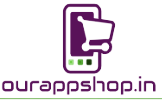AR/VR Developer (Augmented Reality/Virtual Reality) Developer Career Plan (1 Year)
| Quarter | Goals and Objectives | Actions and Tasks | Skills to Develop/Enhance |
|---|---|---|---|
| Quarter 1 | – Strengthen your AR/VR basics | – Review concepts of augmented reality (AR) and virtual reality (VR), including hardware, tracking, and user interfaces | – AR/VR fundamentals |
| – Learn about AR/VR development tools | – Understand software tools and platforms used in AR/VR development, such as Unity3D and Unreal Engine | – AR/VR development tool knowledge | |
| – Study 3D modeling and animation | – Learn how to create 3D models and animations for AR/VR experiences using modeling software | – 3D modeling and animation skills | |
| – Collaborate with AR/VR teams | – Partner with designers, 3D artists, and other AR/VR experts to understand collaborative development workflows | – Collaboration with AR/VR teams | |
| – Join AR/VR communities | – Participate in online forums, conferences, and communities focused on AR/VR trends and techniques | – Networking in AR/VR field | |
| Quarter 2 | – Develop AR/VR prototypes and experiences | – Learn how to design and prototype interactive AR/VR experiences, considering user interactions and interfaces | – AR/VR prototyping skills |
| – Focus on user experience (UX) design | – Understand UX principles and design patterns specific to AR/VR, ensuring seamless and intuitive user interactions | – UX design for AR/VR | |
| – Study spatial computing and tracking | – Explore concepts of spatial computing, tracking technologies, and spatial mapping for creating immersive experiences | – Spatial computing knowledge | |
| – Enhance your version control skills | – Learn to use version control systems like Git to collaborate with other developers and manage code changes | – Version control skills | |
| – Reflect on your progress and set new goals | – Evaluate your AR/VR prototyping skills, UX design knowledge, and set new goals for your career development | – Self-assessment and goal-setting | |
| Quarter 3 | – Deepen your understanding of AR/VR hardware | – Study hardware components used in AR/VR, such as headsets, controllers, haptic devices, and sensors | – AR/VR hardware knowledge |
| – Explore AR/VR interactions and interfaces | – Learn about gesture recognition, spatial UI, and other interaction techniques tailored for AR/VR experiences | – AR/VR interaction design | |
| – Study optimization for performance | – Understand techniques for optimizing AR/VR experiences for performance and responsiveness | – AR/VR optimization strategies | |
| – Collaborate on AR/VR projects | – Work on collaborative AR/VR projects, contributing design ideas, code, documentation, and insights | – Collaboration on AR/VR projects | |
| – Reflect on your progress and set new goals | – Evaluate your AR/VR hardware knowledge, interaction design skills, and set new goals for your career development | – Self-assessment and goal-setting | |
| Quarter 4 | – Study advanced AR/VR topics | – Explore advanced topics like mixed reality (MR), cross-platform development, and spatial sound design | – Advanced AR/VR knowledge |
| – Develop an AR/VR portfolio | – Curate a portfolio showcasing your AR/VR projects, interactive experiences, and design concepts | – AR/VR portfolio development | |
| – Enhance your coding and debugging skills | – Gain hands-on experience with coding and debugging AR/VR applications, interactions, and interfaces | – Coding and debugging skills | |
| – Contribute to AR/VR communities | – Share your insights, tutorials, and case studies by contributing to AR/VR development blogs, forums, or discussions | – Thought leadership in AR/VR | |
| – Reflect on the year’s achievements | – Evaluate your growth, accomplishments, and set new long-term goals for your AR/VR Developer (Augmented Reality/Virtual Reality) career | – Self-assessment and goal-setting |
